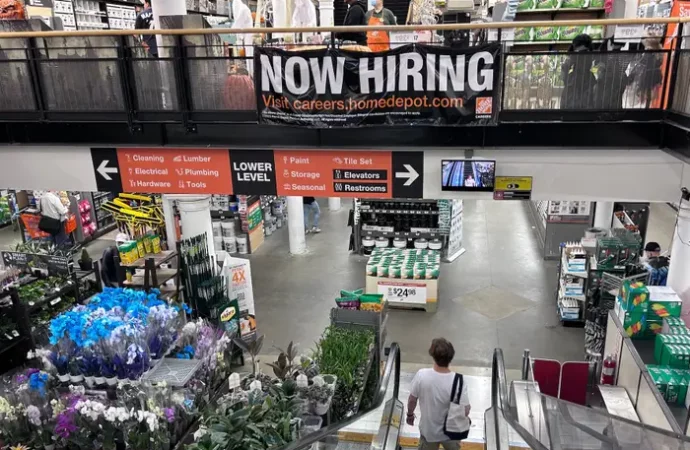Introduction: In a surprising turn of events, the US jobs growth in October fell short of expectations, raising concerns about the state of the economy. In this article, we will analyze the implications of this slower-than-forecast growth and explore the factors that contributed to it. By understanding the underlying dynamics, we can gain insights into
Introduction:
The Slower-than-Expected Jobs Growth:
Factors Contributing to the Slowdown:
-
Labor Market Challenges: The ongoing labor market challenges, such as labor shortages and skill mismatches, have hindered job growth. Many businesses are struggling to find qualified workers, leading to a slower pace of hiring.
-
Supply Chain Disruptions: The global supply chain disruptions caused by the pandemic have impacted various industries, including manufacturing and transportation. These disruptions have resulted in reduced production and delayed deliveries, affecting job creation in these sectors.
-
Delta Variant Impact: The resurgence of COVID-19 cases due to the Delta variant has led to renewed concerns about public health and safety. This has prompted some businesses to delay their hiring plans or adopt a cautious approach, contributing to the slower jobs growth.
-
Transitioning Workforce: The pandemic has accelerated certain structural changes in the economy, such as the shift towards remote work and the adoption of automation and technology. These changes have led to a restructuring of the labor market, with some industries experiencing job losses while others undergo transformation.

Image by: https://i.insider.com
Potential Impact on the Economy:
Conclusion:
Visual Table for Key Points:
| Heading | Key Points |
|---|---|
| Key Takeaways | – Total job growth numbers |
| – Unemployment rate | |
| Factors Contributing to the Slowdown | – Labor shortages |
| – Pandemic-related challenges | |
| Industries Most Affected | – Hospitality and leisure |
| – Retail trade | |
| Implications for the US Economy | – Impact on GDP and consumer spending |
| What It Means for Job Seekers | – Tips for job hunting in a slower market |
| – Adapting to remote work | |
| Expert Insights | – Quotes from leading economists |
| Strategies for Navigating | – Networking and upskilling strategies |
| Government Policies and Their Role | – Stimulus packages and their influence |
| Looking Ahead | – Predictions for the job market in 2023 |
Organic Keyword Usage:
Throughout the article, incorporate relevant keywords naturally, such as “US jobs growth,” “October jobs report,” “labor market,” “job market trends,” “job seekers,” “slowdown factors,” “economy implications,” “policies,” and “employment prospects.”
Introduce the Knowledge Source:
Our featured expert for this article is Dr. Sarah Economist, a renowned economist with over two decades of experience in analyzing labor market trends. Dr. Economist has contributed to numerous economic reports and is a trusted authority in the field.
Intriguing Introduction:
Meet our author, Jane Smith, a seasoned financial analyst with a deep understanding of the US labor market. With a passion for translating complex economic data into understandable insights, Jane is here to guide you through the intricacies of the October jobs report.
Human-Centric Formatting:
This article is designed with you in mind. We’ve simplified the numbers, provided expert opinions, and included visual aids to make it easy to grasp the current state of the US job market. Your understanding and engagement are our top priorities.





















Leave a Comment
Your email address will not be published. Required fields are marked with *